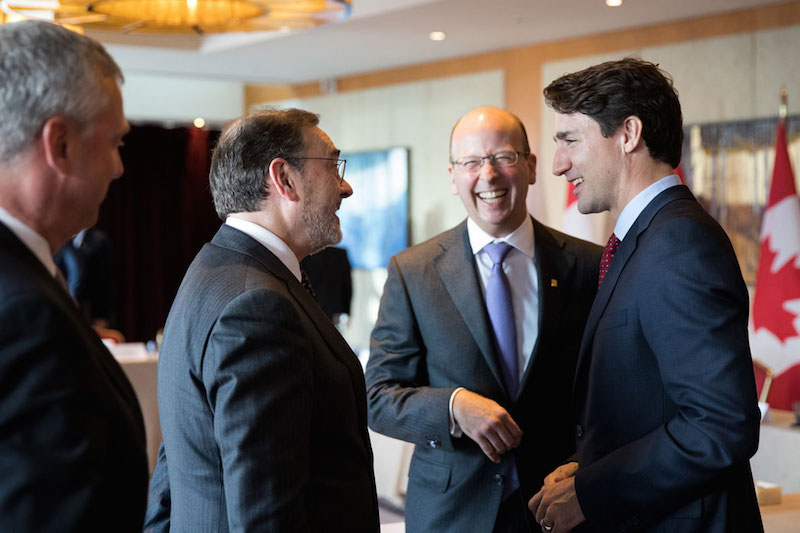Looking for a job? The Liberal Party of Canada is hiring. You could be “co-ordinator riding fundraising support and victory fund” or “funding co-ordinator Laurier Club events.”
The Laurier Club was set up in 1986. John Turner was Liberal leader. The party had been in power from 1963 until 1984. In that election the Mulroney Conservatives had reduced them to 43 seats.
Finding a way back to power included bringing together business and community leaders with senior MPs, providing lapel pins, and giving members access to “an established network of Laurier Club contacts,” as the donation form puts it.
In 2004 the Laurier Club took on its current importance as a fundraising device because Jean Chrétien — in his last months as prime minister in 2003 — limited corporate contributions to political parties to $1,000. Think of it as a sort of poison pill left behind for his rival and successor, Paul Martin.
A new per-vote public subsidy for political parties had been introduced by the Chrétien Liberals, but generous tax write-offs for individual donations up to $5,000 made big gifts attractive.
The Liberal Party had been used to receiving $100,000 yearly from each chartered bank and another $100,000 from its investment-banking arm. With new rules, finding upscale donors became a necessity for the Paul Martin-led party.
Ante up $1,000 to $5,000 and you were invited to regular meetings in your region and a cocktail with the leader once a year. And the leader lived at 24 Sussex Drive.
Ottawa lobbying firms routinely recommended their clients join the Laurier Club. “Pay to play”: that is what businesses looking for contracts or friendly legislation were told by insiders paid to know how to make things happen in Canada.
When the Harper Conservatives won a majority, they abolished the per-vote subsidy and scaled back the individual donor level.
With a solid base of about 30,000 party donors from Reform Party days, the Harper Cons were a fundraising machine running on smaller government, tax-cut ideology.
The Laurier Club had between 1,000 and 2,000 members, not nearly enough to be competitive with Harper, as successive Liberal Leaders Paul Martin, Stéphane Dion and Michael Ignatieff were to find out.
Today the Liberals have their own fundraising machine based on the Laurier Club model. Justin Ling has reported that nearly 100 “cash for access” events are being held across Canada, featuring Justin Trudeau, Finance Minister Morneau, Justice Minister Wilson-Raybauld, and the other cabinet ministers.
Bill Morneau meets with people lobbying the Finance Department and they pay for the privilege of speaking with him.
The Liberals have a Leaders Circle. Sign up 10 new Laurier Club members at $1,500 a pop, and you get to be part of it. Membership includes an annual event with the leader.
Traditionally the Liberal party had a social wing and a business wing. In postwar Canada, the business Liberals were led by C.D. Howe, and the social Liberals by Paul Martin, Sr.
By the time the Chrétien Liberals won government in 1993, the business Liberals — led by Paul Martin, Jr. — had taken control of the party. The Liberal business agenda featured austerity, government cutbacks, off-loading social responsibilities to the provinces, and abolishing the social safety net, forcing people to work for next to nothing.
The 2000 Liberal budget gave $100 billion worth of tax cuts to the wealthy and to businesses. It was a sort of “welcome to the 21st century” from Canadian Liberals.
The Chrétien-Martin Liberals had no difficulty making their own the free trade, de-regulation, and privatization agenda proposed by the then Business Council on National Issues, and adopted by the Mulroney government after the 1984 election.
The Justin Trudeau Liberals have adopted Harper Conservative climate change targets and cuts to health-care funding, promoted corporate trade deals and approved LNG projects opposed by Aboriginal peoples.
Does it have anything to do with cash-for-access Laurier Club members getting citizenship rights denied to regular Canadians?
Duncan Cameron is former president of rabble.ca and writes a weekly column on politics and current affairs.



